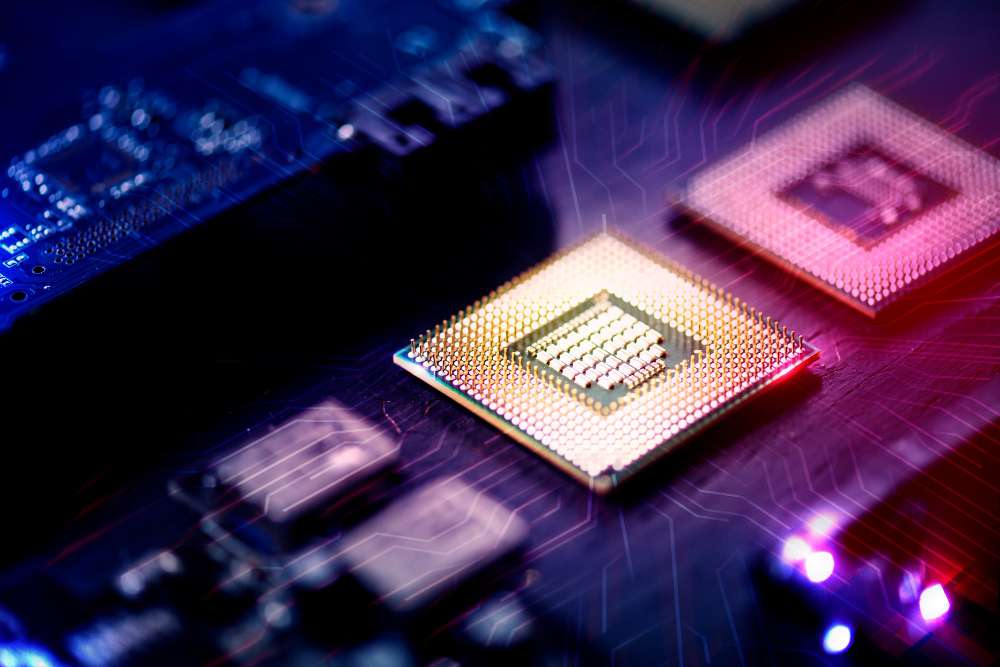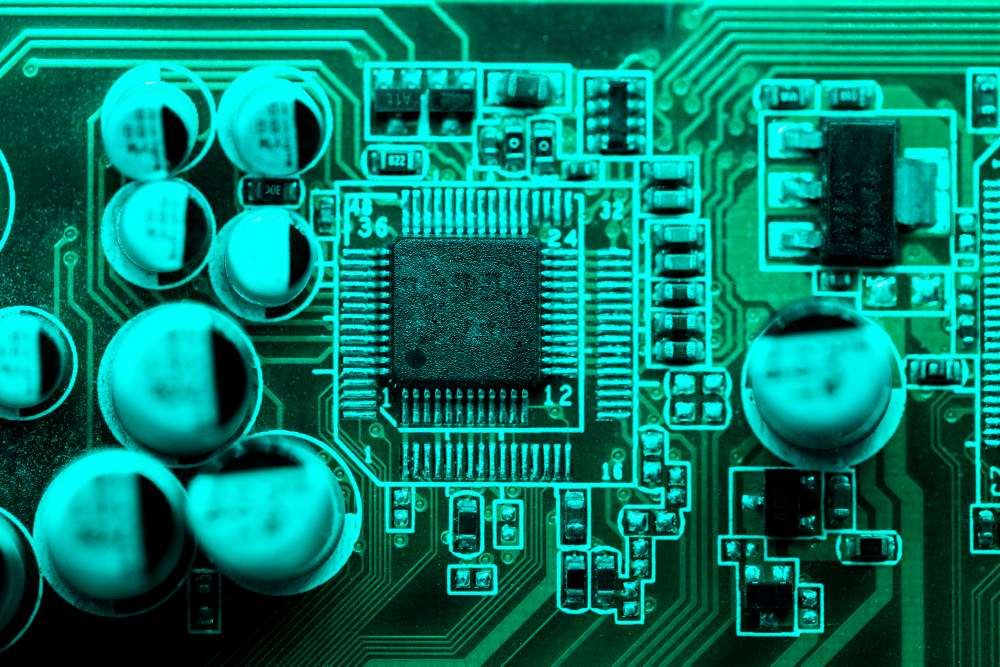The best processors for graphic designers in 2025 are: AMD Ryzen 9, Intel corei9, AMD Ryzen 7, Intel Core i7, AMD Ryzen 5, AMD Threadripper
The debate over which processor is best for graphic designers can be endless.
In 2025, however, certain processors stand out for their ability to handle design tasks effectively. This guide breaks down the top processors for graphic designers, so you can make an informed decision.
Best Processors for Graphic Designers in 2025
| Processor | Base Clock Speed Range | Core Count Range |
|---|---|---|
| AMD Ryzen 9 | 3.0 GHz to 3.8 GHz | 8 cores to 16 cores |
| Intel Core i9 | 2.9 GHz to 3.7 GHz | 8 cores to 18 cores |
| AMD Ryzen 7 | 3.6 GHz to 4.2 GHz | 6 cores to 8 cores |
| Intel Core i7 | 2.8 GHz to 4.0 GHz | 4 cores to 12 cores |
| AMD Ryzen 5 | 3.6 GHz to 4.2 GHz | 4 cores to 6 cores |
| AMD Threadripper | 3.0 GHz and higher | 16 cores to 64 cores |
Graphic designers primarily running single-threaded programs( read below for more on this) would benefit from a processor with a higher clock speed. In this case, the Intel Core i7 or AMD Ryzen 5.
On the other hand, the best processor for graphic designers running multi-threaded programs such as Adobe After Effects which can take advantage of multiple cores, would benefit from a processor with a higher core count. In this scenario, the AMD Threadripper or the Intel Core i9.
Single-threading vs hyperthreading Processors for Graphic Design

When considering graphic design processors, the crucial factor to consider is the software you intend to use. Determine whether it is a single-threaded or a hyper-threaded program, as this will guide your choice of a graphics design processor.
Single-threading: This refers to software designed to run tasks sequentially on a single processing thread or core. Each task must be completed before the next one can start.
Hyper-threading: This pertains to software where multiple tasks are performed on a single core. While there is only one physical core, the computer perceives it as multiple logical cores, allowing for the distribution of calculations across various units.
For graphic designers, it may seem logical to opt for a hyper-threaded processor. If a program is single-threaded, then it can utilize only one core, leaving the rest redundant and the cost of purchasing them unnecessary. Programs like AUTOCAD, CorelDraw, Photoshop, Illustrator, Cinema4D, and Revit mostly perform at a single-thread level. If your design program is single-threaded then focus on a processor with faster clock speeds since single tasks that must be performed can be cleared away quickly enabling the succeeding ones. Avoid spending huge sums on processors just for the number of cores they have.
For hyperthreaded programs, multiple tasks are executed simultaneously and this demands multiple cores e.g. the AMD Ryzen. Premier pro, Davinci code, and AfterEffect are popular hyper-thread programs
It’s crucial to assess the software you use. Based on this, you can make an informed decision on the type of processor that best suits your graphic design needs.
Processors are not the only vital technical aspect for graphic designers; there is ram size and type to consider, and also mice to enable comfort during long working hours.
With single threads and hyper ones out of the way. Let’s take a look at the best processors you can use for graphic design.
Top 6 Processors for Graphic Designers in 2025 :

Here are 6 high-performing processors for graphic designers from the AMD and Intel brands
- AMD Ryzen 9: The AMD Ryzen 9 processor is a powerful option for graphic designers who work with resource-intensive design applications. With up to 16 cores, it provides exceptional performance and processing power, allowing for the smooth handling of complex design tasks. Whether you’re rendering 3D models, working with high-resolution images, or running multiple design applications simultaneously, the AMD Ryzen 9 can handle it with ease. The clock speed is 3.0 GHz to 3.8 GHz.
- Intel Core i9: The Intel Core i9 processor is designed for graphic designers who engage in single-threaded tasks and require high-performance capabilities. With up to 10 cores, it excels in tasks such as illustration and UI/UX design. The Core i9 delivers fast and efficient processing, ensuring smooth workflows and precise execution of design tasks. The clock speed is 2.9 GHz and can go up to 3.7 GHz
- AMD Ryzen 7: The AMD Ryzen 7 processor is an excellent choice for graphic designers who prioritize multitasking and work on complex projects like sublimation for printing. With up to 8 cores, it provides the necessary processing power to handle multiple design applications simultaneously. Whether you’re working on large-scale projects or juggling various design tasks, the Ryzen 7 ensures smooth performance and efficient multitasking. The clock speed is 3.6 GHz to 4.2 GHz, depending on the specific model.
- Intel Core i7: The Intel Core i7 processor is well-suited for graphic designers who require multitasking capabilities and work on complex illustrations and editing tasks. With up to 8 cores, it offers a balance between performance and efficiency. The Core i7 enables seamless multitasking, allowing designers to work on intricate illustrations while running resource-intensive design software. The clock speed is 2.8 GHz to 4.0 GHz
- AMD Ryzen 5: The AMD Ryzen 5 processor is a reliable choice for graphic designers who engage in moderate multitasking and seek an immersive design experience. With up to 6 cores, it delivers solid performance for a range of design tasks. Whether you’re working on graphics-intensive projects or exploring immersive design environments, the Ryzen 5 ensures smooth operation and a responsive user experience. The clock speed is 3.6 GHz to 4.2 GHz making. Laptops possessing this often tend to be budget-friendly laptops for designers.
- AMD Threadripper: For graphic designers involved in rendering, high-resolution editing, and simulations, the AMD Threadripper processor is a powerhouse. With an impressive core count of up to 64, it offers unmatched processing capabilities for demanding design tasks. Whether you’re working with large-scale visualizations or handling complex simulations, the Threadripper delivers exceptional performance and efficiency. The clock speed is around 3.0 GHz and goes up to 4.0 GHz or higher.
Final Thoughts

The better processor for graphic designers comes down to your needs. For designers working on single-thread applications, multithreaded ones might push redundancies that affect your work while multithreaded applications on a single-core processor could cause lag times.
Budget is also important, as single cores could be cheaper, and sometimes pockets don’t give much of an option.
However, 2025 isn’t over, and there are more processors to be released this year. The better processors will come with tech that enables you to get out of complex modes in Photoshop easily. But for now, these six are the best processors for graphic designers in 2025!
Sign up to keep up to date with exciting trends on the best processors for graphic designers. Don’t miss a processed beat!


